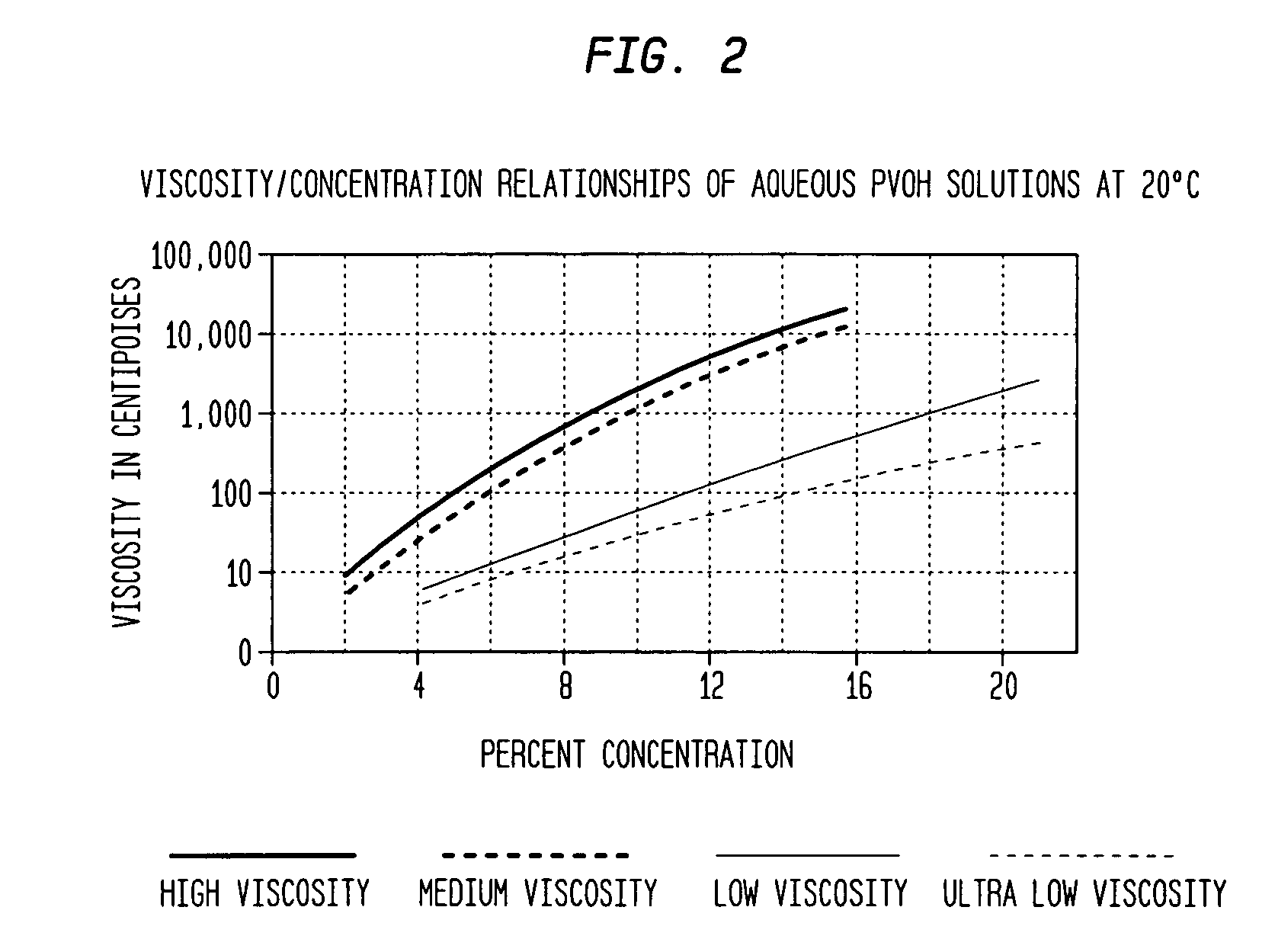Fluid loss concentrate for hydraulic cement
a technology of hydraulic cement and fluid loss concentrate, which is applied in the direction of colloidal chemistry, transportation and packaging, mixing, etc., can solve the problems of cement fluid loss being particularly difficult to stir, fluid loss can damage sensitive formations, solids to settle, etc., to reduce fluid loss, not too hard to stir, and good rheology
- Summary
- Abstract
- Description
- Claims
- Application Information
AI Technical Summary
Benefits of technology
Problems solved by technology
Method used
Image
Examples
examples 1-4
[0082]For purposes of comparison, aqueous cement slurries were prepared using PVOH resin believed to have a characteristic viscosity of about 50 in a ratio of 1:2 with Lomar® D dispersant and tested for fluid loss as indicated in Table 2 below. The slurries had an initial density of about 16.4 lb / gallon.
[0083]As shown below in Table 2, below, the relatively high molecular weight resin, when used with a significant amount of dispersant, exhibits API fluid loss values of about 20 ml / 30 minutes at 110° F.
[0084]
TABLE 2Examples 1-4Fluid LossTempPVOHDispersant (%Fluid LossAPIExample(° F.)(% bwoc)bwoc)(ml / min)(ml / 30 min)11100.51.010 / 30 2021900.5— 38 / 0.4658 (calc)31900.51.016 / 30 3242600.51.089 / 12281 (calc)
examples 5-10
[0085]The following examples illustrate the fluid loss properties of PVOH having various characteristic viscosities.
example 5
[0086]A quantity of 81.2 parts by weight of water was added to a mixing vessel and 18.8 parts by weight of 87-89% hydrolyzed polyvinyl alcohol powder with a characteristic viscosity of 5.2-6.2 cP was added. The mixture was heated to 85 degrees C. for sixty minutes to produce a solution of polyvinyl alcohol. From this solution 1.0% bwoc of the polyvinyl alcohol was mixed with 0.5% bwoc dispersant powder and water with the balance Class H cement to produce a cement slurry with a density of 16.2 pounds per gallon (ppg). The cement slurry was conditioned per American Petroleum Institute (API) standards for 20 minutes and placed in an HTHP Fluid Loss Cell. Fluid loss was measured at a temperature of 110 degrees F. and a pressure of 1000 psig for 30 minutes and the slurry was checked for plastic viscosity and yield point. The slurry exhibited an API Fluid Loss of 13 mL / 30 minutes. The plastic viscosity was 81 cP and the yield point was −2 lb / 100 sq.ft.
PUM
| Property | Measurement | Unit |
|---|---|---|
| temperatures | aaaaa | aaaaa |
| temperatures | aaaaa | aaaaa |
| weight percent | aaaaa | aaaaa |
Abstract
Description
Claims
Application Information
 Login to View More
Login to View More - R&D
- Intellectual Property
- Life Sciences
- Materials
- Tech Scout
- Unparalleled Data Quality
- Higher Quality Content
- 60% Fewer Hallucinations
Browse by: Latest US Patents, China's latest patents, Technical Efficacy Thesaurus, Application Domain, Technology Topic, Popular Technical Reports.
© 2025 PatSnap. All rights reserved.Legal|Privacy policy|Modern Slavery Act Transparency Statement|Sitemap|About US| Contact US: help@patsnap.com



